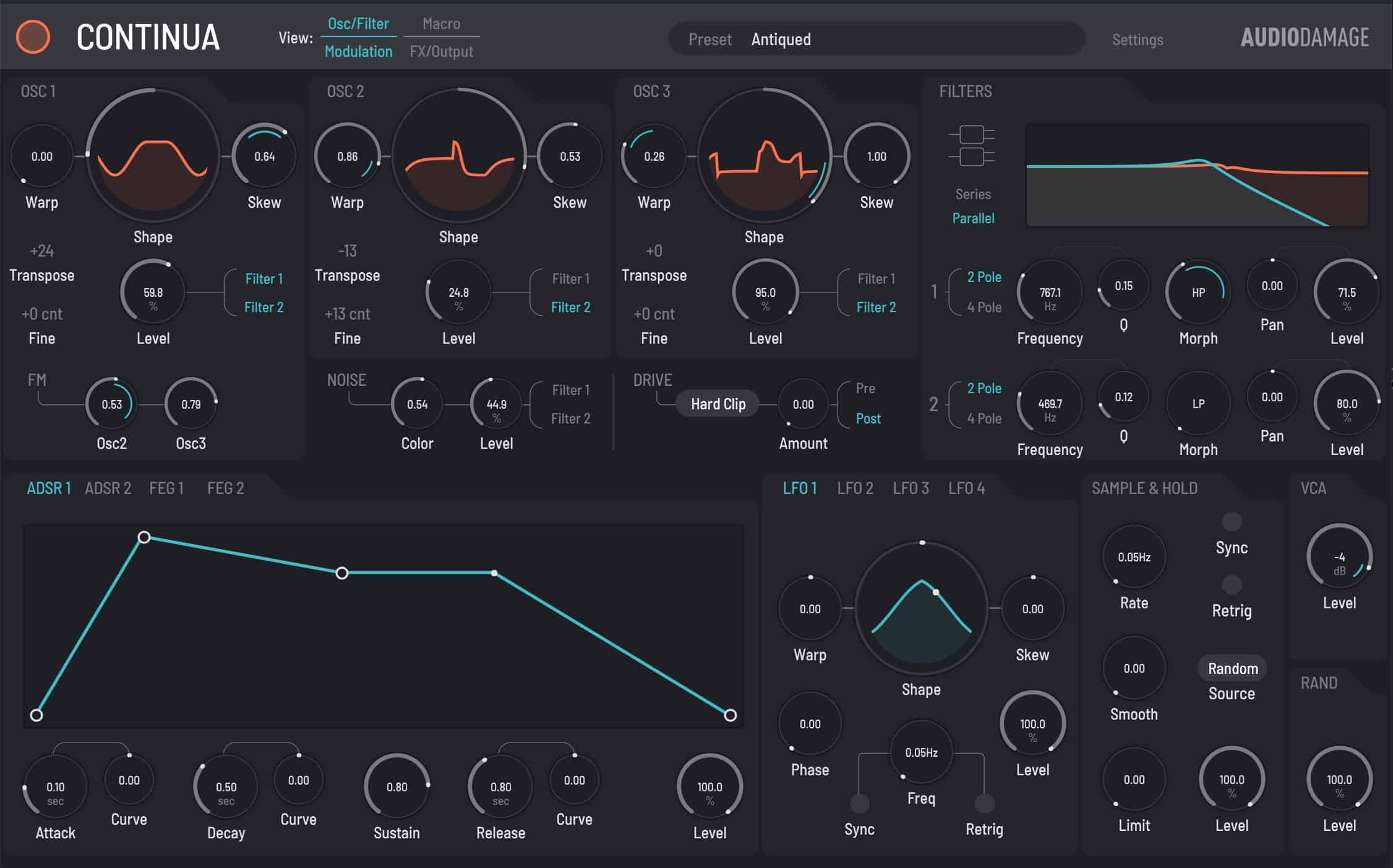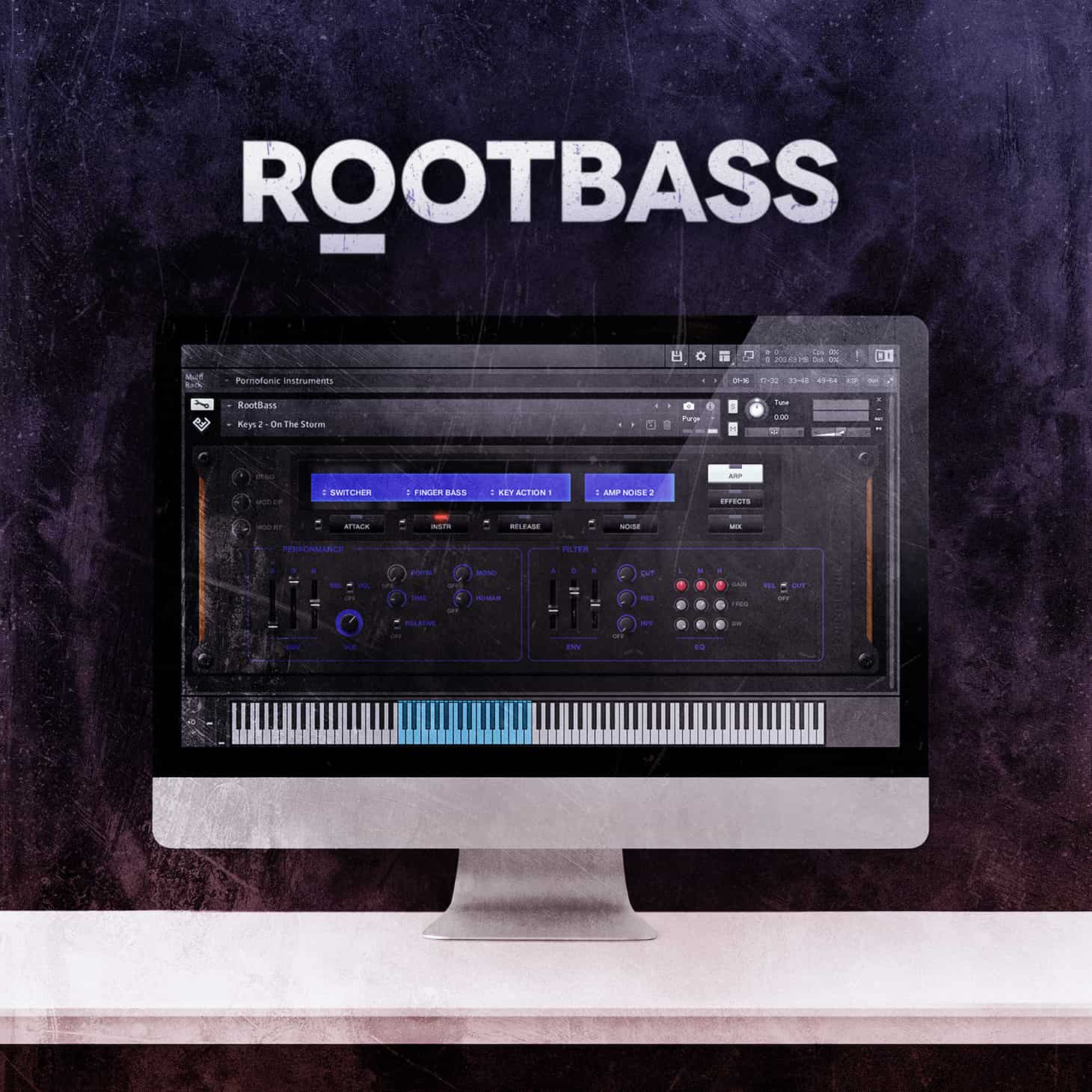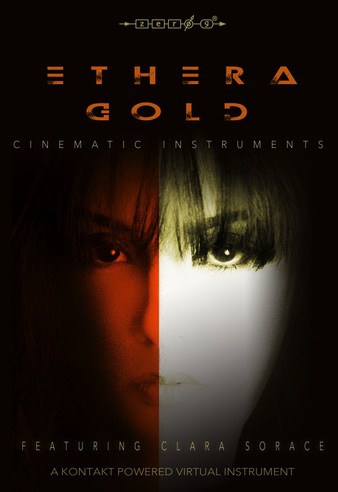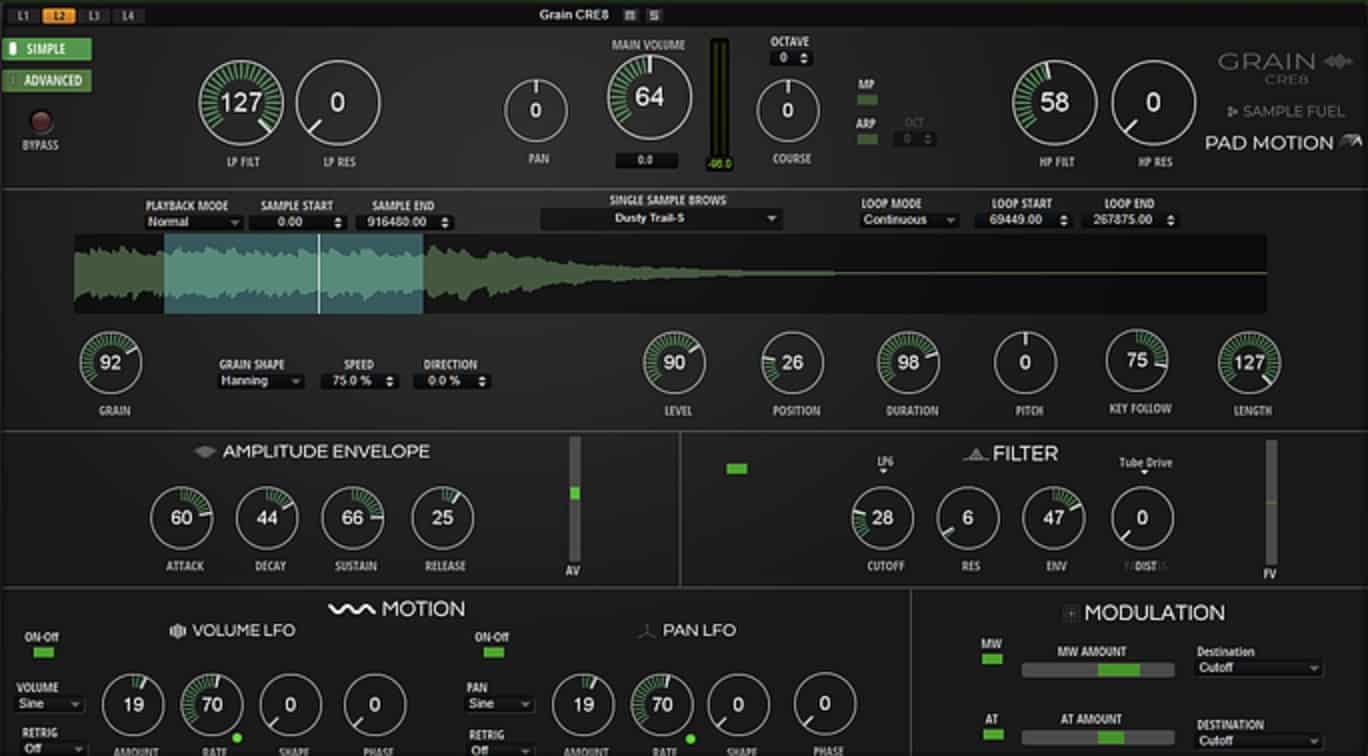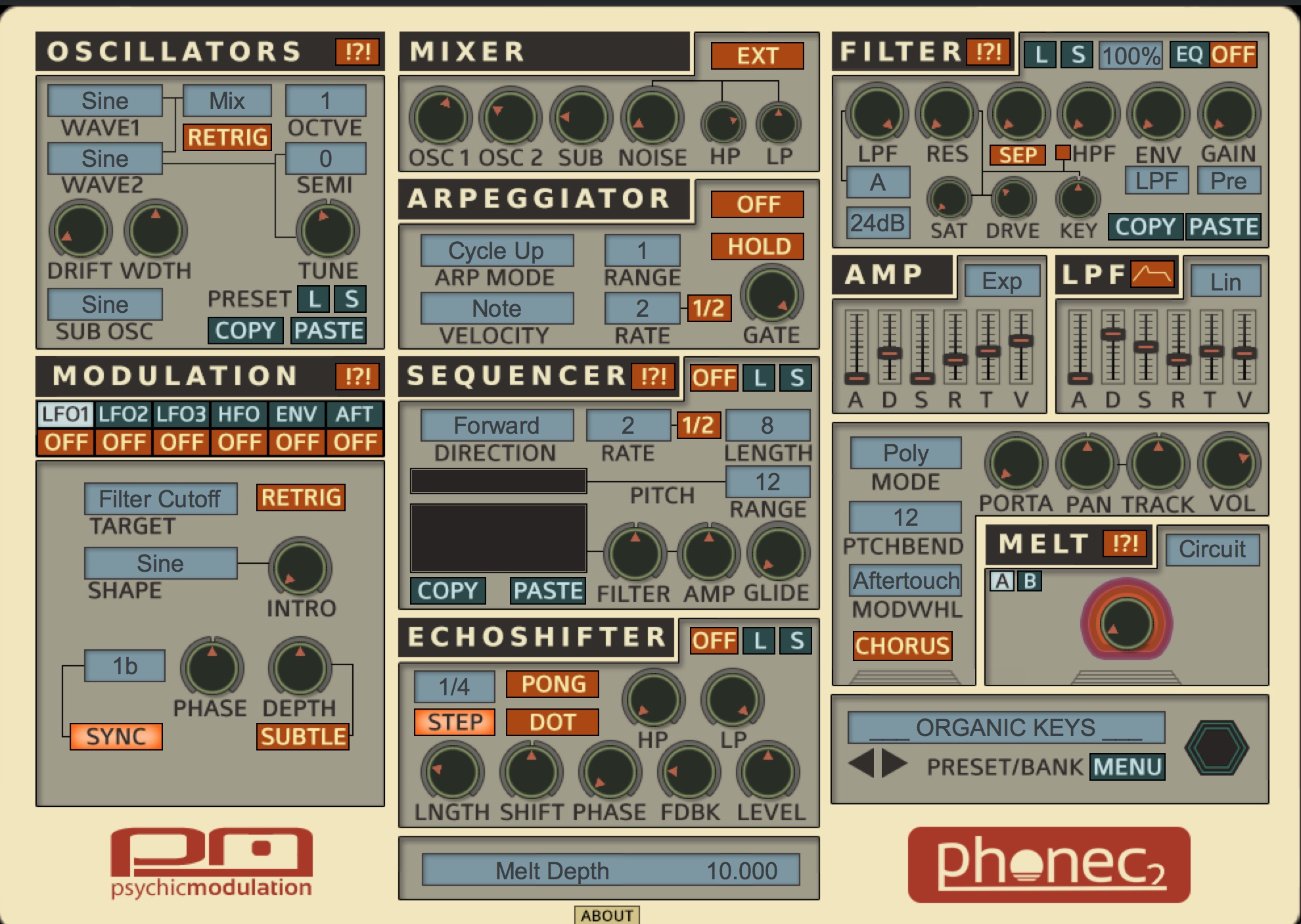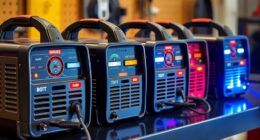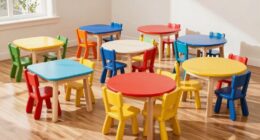Continua by Audio Damage
Audio Damage released Continua, their three-oscillator, dual-filter virtual analog polysynth. Continua is a modulation playground, with fully polyphonic LFOs and envelopes and full MPE implementation.
An immediately intuitive three-oscillator analog-style synth with two filters, up to 16 unison voices, copious polyphonic modulation sources and three onboard effects, Continua puts highly controllable waveform morphing at the center of its architecture and workflow. Bringing the deft harmonic shifts of wavetable synthesis to mind, Continua’s oscillators sweep seamlessly from outputting sine through a square to saw waves; each of the four LFOs transitions from a double sine to square, via triangle waveshapes; and the dual independent filters morph continuously through low-pass, band-pass, high-pass and notch responses. Skew and Warp controls enable further manipulation of oscillator and LFO waveforms, and all morphing controls can be modulated for pads and textures that constantly evolve right at the oscillator/filter level.
Continua embraces the continuous, ever-changing nature of sound, providing an unprecedented level of hands-on control to classic analog synthesis in virtual form. Continua goes beyond the capabilities of a traditional three-oscillator subtractive synthesizer with a morph everything” design philosophy. The oscillators and LFOs generate a nearly infinite variety of wave shapes with multiple controls for bending the shape in different ways. The pair of analog modeled filters seamlessly blend between the standard responses like low-pass and high-pass, creating in-between characteristics and unusual sweeps.
Each time segment of the ADSR envelope generators bends between exponential, linear, and logarithmic movement, while the multi-point Flexible Envelope Generators can generate anything from short transients to long sequences. All modulation sources can connect to nearly any knob in Continua, providing modular-like flexibility without the jungle of patch cords. Stereo chorus, delay, and reverb effects provide the finishing polish to Continua’s evolving sound.

Every knob on the UI is a mod target, and the oscillators and filters are morphing, resulting in an incredibly expressive, evolving synth unlike any you’ve seen before!
Continua Features
- Three Flexible Oscillators
Continuously variable morphing waveform, with warp, shape, and skew controls. - Dual Morphing Filters
Filters can be used in serial or parallel modes, and morph from lowpass through bandpass and highpass to notch in 2-pole and 4-pole configurations. - Noise Source
Noise source features a “color” control that affects tonal characteristics of the noise. - ADSR x 2
Continua has two ADSR-style envelope generators, with curve on attack, decay, and release. - Flexible Envelope Generator (FEG) x 2
The two FEGs are arbitrary function generators, with up to 99 steps, curve and step level control, arbitrary loop points, and host tempo sync. - Flexible Low-Frequency Oscillator (FLFO) x 4
The four FLFOs utilize four controls (phase, shape, skew, and warp) to access a virtually limitless palette of waveforms, and feature host tempo sync and retrigger. - Sample And Hold
The S&H mod source can sample noise (random) or any of the other mod sources, at either a user-defined rate or a musical division, and includes built-in smoothing and distance limit (for a “walk” effect). - Modulation
Every knob in Continua is a mod destination, with a very fast and simple assignment matrix access with a right-click on the knob (double-tap on iOS). - Tuning Tables And Global Tuning Offset
Re-tune Continua to new intonations and temperaments using the open-source and easy-to-use TUN file format. A global tuning offset (default to A=440) allows you to easily retune the entire synth to match a different A frequency without using a tuning table. - MPE (MIDI Polyphonic Expression)
Continua understands both “legacy” MIDI and MPE. Use your Linnstrument, Roli Seaboard, Haken Continuum, Madrona Labs Soundplane, or Sensel Morph (among others) to directly access per-note pressure, pitch bend, and modulation. - Per-Instance Settings
Continua utilizes a per-instance customization method: set MPE mode, aftertouch smoothing, pitch bend range override, tuning table, and global tuning offset for each instance in your DAW, with an option to save any state as your global starting point. - Factory Presets
Continua comes with a substantial collection of factory content, including Designer Presets from Red Means Recording, Glitch Machines, and Sonalsystem. - Cross-Platform Preset Format
Continua utilizes an XML-based preset manager. Work between multiple systems without troubles, make a preset on your desktop machine and paste it to the iOS version with Handoff, easily share your creations with your friends, or make a preset bundle to sell. - Fully Resizable Hi-Dpi/Retina GUI
Continua’s vector-based GUI is resolution-agnostic, and displays the same on every system and resolution. Easily resize the UI (per instance) to match your visual needs, from postage stamp to poster-sized.
Polyphony
Continua is fully polyphonic, which is to say that it can play several notes simultaneously. The sound for each note is created by what Audio Damage calls a voice. The voices have a common set of controls and parameters, shown by Continua’s window. As you’d expect, turning one of Continua’s knobs changes that setting for all the voices. Continua has 15 voices and hence can play up to 15 notes simultaneously. Continua also has a unison mode which causes some or all of the voices to play the same note, creating a thicker sound.
Sound Sources
Continua’s sounds start with three identical oscillators with independent controls. The oscillators have continuously variable waveshapes for a wide variety of timbres, ranging from traditional analog-like sawtooth and rectangular waves to modern digital-sounding shapes.
Continua also has a noise source with sophisticated internal filtering for generating white, dark, and light noise.
Filters
Continua has two filters with independent controls. Rather than being restricted to the usual frequency-response characteristics described as low pass, high pass, bandpass, and notch, Continua’s filters can change smoothly between these shapes. Accompanying the filters is a saturation/clipping/shaping block for warmth and distortion.
Modulation
While Continua’s sound sources and filters can create a very wide range of sounds, those sounds are largely motionless—they don’t change. Modulation, which essentially means something changing something else, imparts shape and motion on the static sounds, making them short and sharply percussive, long and unpredictably evolving, or anything in between. Modulation always involves a source, that is, the something that’s doing the changing; and a
destination, the something that’s being changed.
Modulation Sources
Essential for both basic note-shaping and complex timbres, Continua provides a large variety of modulation sources: two classic ADSR envelope generators, two multi-point flexible envelope generators (FEGs), four low-frequency oscillators (LFOs) with completely variable waveshapes, a sample-and-hold source fed by the EGs and LFOs as well as its own source of randomness, and a random source triggered at the beginning of each note. Unlike some simpler synthesizers, Continua’s modulation sources are polyphonic, that is, each voice has its own set of envelope generators, LFOs, and so on. Each note within a chord can evolve independently of the others.
Modulation Destinations
While many synthesizers have a small number of obvious modulation destinations like the filter’s frequency, almost every parameter in Continua’s voice can be modulated. If it has a knob on the panel, you can probably modulate it. This includes the controls for the modulators; they can modulate themselves or each other. Each destination can receive up to five modulation signals.
Continua Presets
With hundreds of presets from GlitchMachines, SonalSystem, Red Sky Lullaby, and Red Means Recording. With all those presets Continua is ready to play out of the box and waiting for your own explorations of sounds.

Continua is now available for macOS (10.11 or higher) and Windows 64-bit (8.1 or higher), in AU, AAX, VST, and VST3 formats. Coming soon for iOS/iPadOS (11 or higher), in AUv3 and Standalone/IAA formats.
About Audio Damage
Audio Damage was founded in 2002 to bring creative and experimental tools to musicians, built and coded in the United States, with the highest quality workmanship. Their roster of innovative plugins includes Quanta, Kombinat Tri, Enso and Dubstation 2, to name but a few.
Availability and Pricing
Continua is US$79.00 for desktop (Introductory Price!) until February 5th, US$99.00 thereafter.


